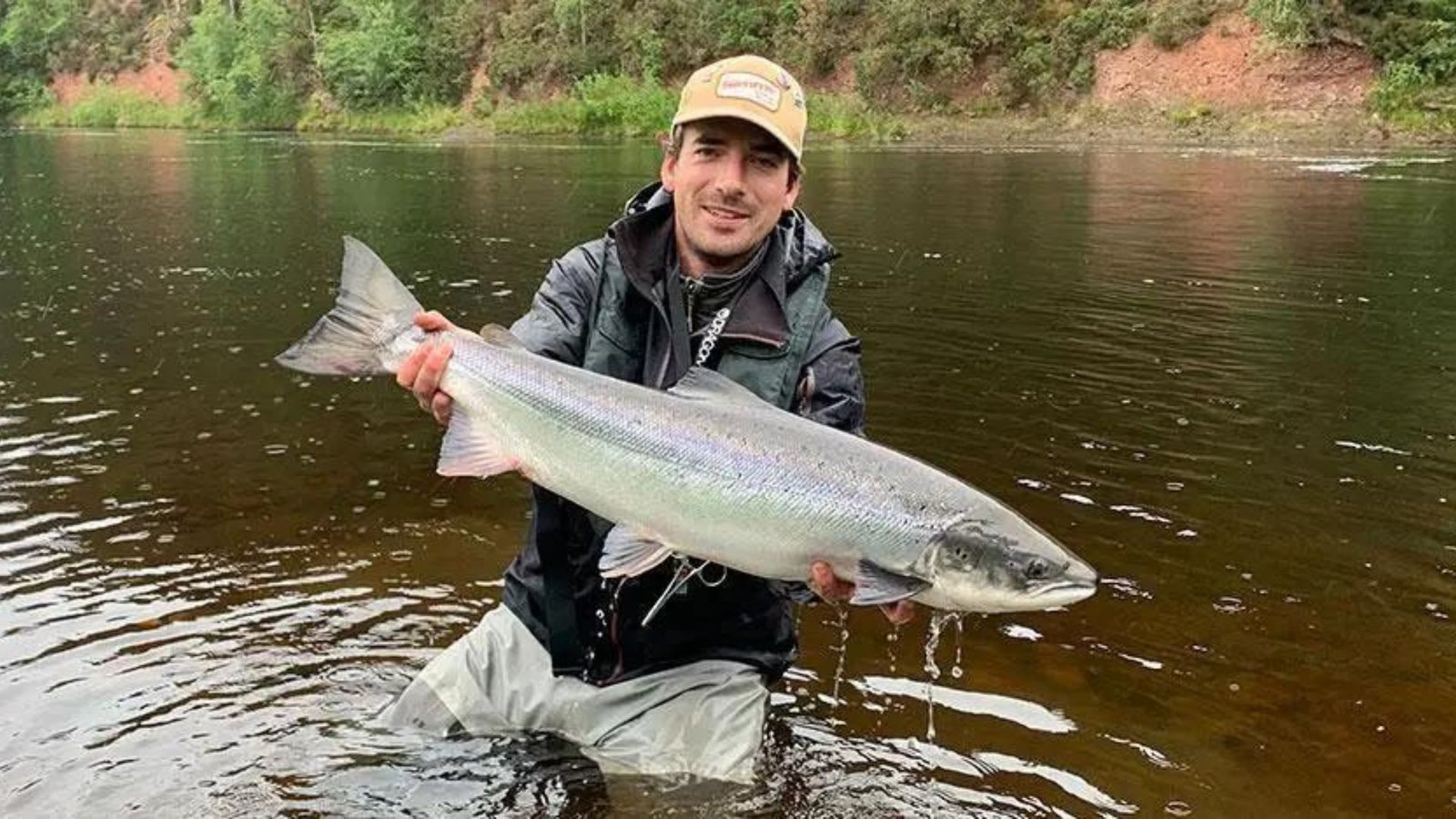Reading water is an essential skill for any fly fisherman, especially when targeting salmon. By understanding how water flows and how salmon interact with their environment, you can make more informed decisions about where to cast your line. This skill can make the difference between a day of frustration and a day of successful fishing.

How to Read Water for Effective Salmon Fly Fishing
1. Understanding Salmon Behavior
a. Salmon Migration: Salmon are migratory fish, meaning they travel from the ocean to freshwater rivers to spawn. Understanding their migration patterns can help you predict where they might be at different times of the year.
b. Holding Spots: Salmon often rest in specific areas called holding spots. These are usually places where they can conserve energy, such as deep pools, behind large rocks, or in slow-moving water.
c. Feeding Habits: While salmon do not feed much during their migration, they still strike at flies out of aggression or curiosity. Knowing this can help you choose the right fly and presentation.
2. Identifying Key Water Features
a. Riffles: Riffles are shallow, fast-moving sections of a river with a lot of surface agitation. These areas oxygenate the water, attracting insects and, in turn, salmon. Riffles are often good spots to find active fish.
b. Runs: Runs are deeper and slower than riffles but still have a noticeable current. These are transition areas where salmon often travel between feeding and holding spots. Fishing runs can be very productive, especially if they lead into deeper pools.
c. Pools: Pools are deep, slow-moving sections of a river where salmon can rest. Look for pools with cover, such as overhanging trees or submerged logs, as these provide additional security for the fish.
d. Eddies: Eddies are areas where the current reverses direction, often found behind obstacles like rocks or bends in the river. Salmon use eddies to conserve energy, making them excellent spots to target.
3. Observing Water Movement
a. Surface Indicators: Pay attention to surface indicators such as bubbles, foam lines, and disturbances. These can signal changes in the underwater structure and help you locate potential salmon-holding spots.
b. Water Clarity: Clear water allows you to see underwater structures and fish more easily. However, salmon can be more easily spooked in clear water, so approach quietly and make longer casts.
c. Water Temperature: Salmon prefer cooler water, typically between 50-60°F (10-15°C). Use a thermometer to check the water temperature, and focus your efforts on areas with optimal conditions.
4. Using the Right Equipment
a. Polarized Sunglasses: Polarized sunglasses reduce glare on the water’s surface, allowing you to see underwater structures and fish more clearly.
b. Wading Gear: Proper wading gear, including boots and waders, lets you access different parts of the river safely. Be mindful of your movements to avoid spooking the fish.
c. Fly Selection: Choose flies that mimic the natural prey of salmon in the area. Brightly colored flies work well in murky water, while more natural patterns are effective in clear water.
5. Applying Techniques
a. Nymphing: Nymphing involves using weighted flies to imitate insects drifting near the riverbed. This technique is effective in deeper water where salmon rest.
b. Swinging Flies: Swinging flies involves casting across the current and letting the fly swing downstream. This technique works well in runs and riffles, where salmon are more active.
c. Dry Fly Fishing: While less common, dry fly fishing can be effective during specific hatches. Watch for rising fish and match your fly to the insects on the water.
6. Practicing Patience and Observation
a. Scout the Area: Before fishing, spend some time observing the water. Look for signs of fish activity, such as jumping salmon or ripples on the surface.
b. Be Patient: Effective water reading requires patience. Spend time studying the river and adjusting your techniques based on what you observe.
c. Record Observations: Keep a fishing journal to record your observations and successes. Over time, this information will help you become a more skilled angler.
Conclusion
In conclusion, reading water is a crucial skill for successful salmon fly fishing. By understanding salmon behavior, identifying key water features, and applying the right techniques, you can significantly improve your chances of catching salmon. Remember to observe the water, be patient, and use the right equipment to enhance your fishing experience. With practice and dedication, you’ll become adept at reading water and enjoy more fruitful salmon fly fishing trips. So, get out there, study the river, and apply these tips to catch more salmon. Happy fishing!



